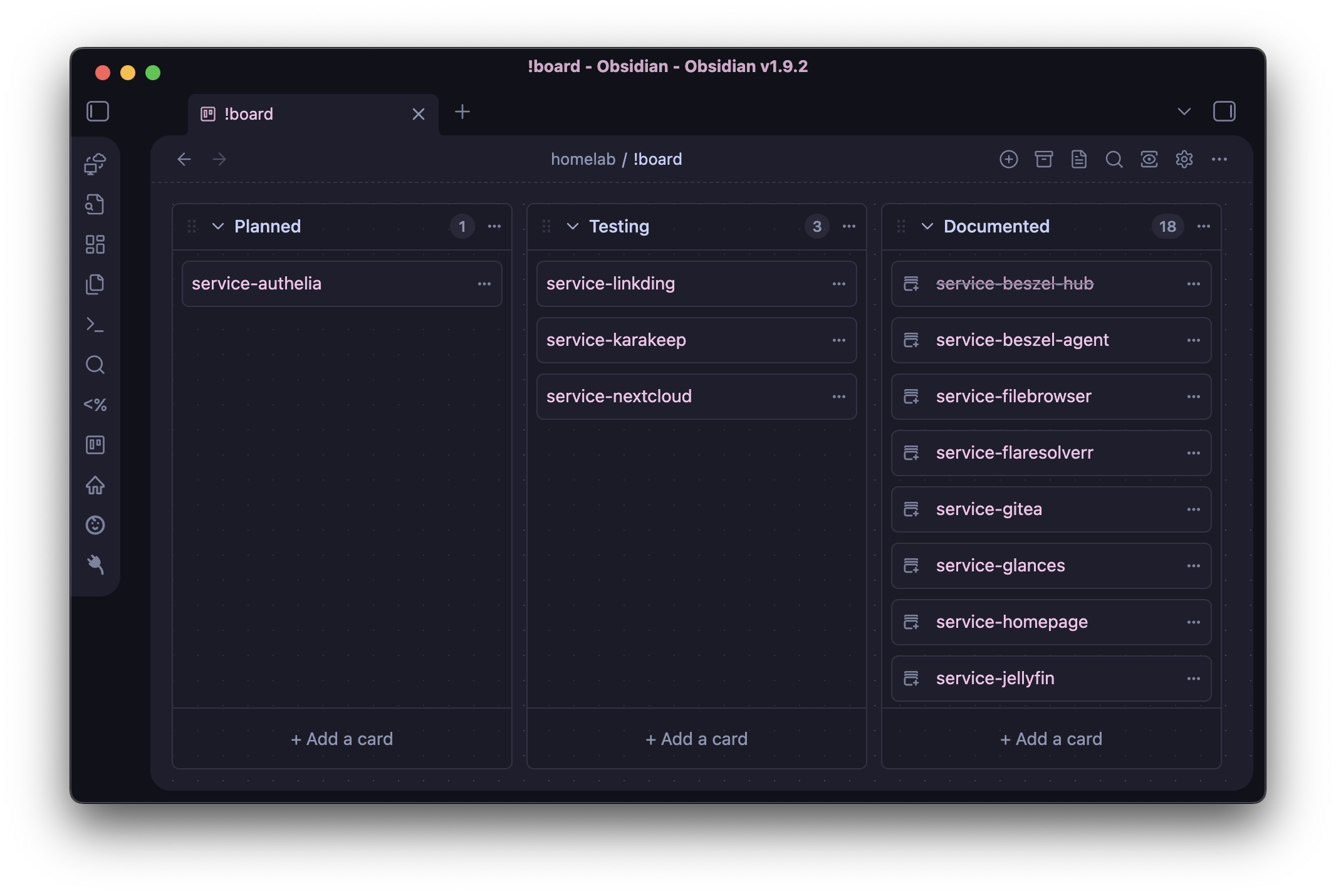Took some while, but I’ve settled into a workflow that balances flexibility with structure (and actually works for me). It covers the whole process — from capturing ideas on the go to publishing posts on this blog.
This isn’t a deep dive into any one tool, but more of an overview of how everything fits together.
Step 1: Hoard Ideas in Karakeep
Whenever I see something that looks cool (usually while tinkering with my homelab, checking Reddit or running into a problem and searching for a solution), I put it into Karakeep. Usually I don’t even read through them at first - filtering comes later.
Karakeep
On that note,
Karakeepis pretty cool. I have seenHoardermentioned a lot recently (because it got shut down and replaced byKarakeepwhich made a lot of people angry). Initially I didn’t see the need for a bookmarking app. Especially after seeing the stack needed to run it - if you are the same, give Linkding a try - but after using it for a while it is quite nice. It replaced Obsidians Web Clipper for me.
Step 2: Move Ideas into Obsidian
Trying stuff out
Once in a while I check Karakeep and move worthy ones I wanna try out into my Obsidian vault. I use the Kanban plugin to track progress.
The board lives at homelab/!board.md and has three columns:
Planned— Things I wanna try outTesting— Things I currently run on my serverDocumented— Things I’ll keep and documented (basically my done column)
Each card links to an Obsidian note—usually named like service-<topic>.md.

Sharing stuff
If I am happy with whatever I just set up, ran into problems or just think it’s cool but not that well known, I’ll write a little post for it.
It’s the same process as above. Got a second board for my blog: blog/!board.md
Planned— Things I could write aboutTodo— Things I decided to write aboutInProgress— Things I am writing about (this one right now - Friday 13th at 10:29 PM)Done- Things that are published
Short intermission - my Obsidian Vault
I try to keep my Obsidian vault flat. I’ve started with subfolders f.e. homelab -> service -> security -> vaultwarden - but I personally didn’t see any benefits. It just made navigating a pain in the ass. But no folders also does not work for me.
Example structure:
├── blog
│ ├── !board.md
│ ├── blog-karakeep.md
│ └── blog-renovate.md
├── excalidraw
├── notes
├── homelab
│ ├── !board.md
│ └── service-vaultwarden.md
├── templates
│ ├── template-service_template.md
│ └── template-blog_content_template.md
I rely on a strong naming convention (blog-, service-, clip-, etc) and backlinks/tags to keep everything discoverable and organized.

Step 3: Writing
Once I’ve got time (and feel bad that I haven’t posted anything in a while) I pick one of my ToDo cards and start thinking about how to structure it. Me, being an idiot myself, try my best to make my posts as easy to follow as possible.
At the moment I have 2 big topics on blog.bndct.dev:
- homelab
- devops
Depending on where I want the post to go into, I either one of the following in the root of my blog repo:
hnpd $BLOG_NAME.mdhnph $BLOG_NAME.md
# Create a new DevOps post
# Usage: hndp my-new-devops-article.md
hnpd() {
hugo new "content/posts/devops/$1"
}
# Create a new Homelab post
# Usage: hnhl my-cool-homelab-project.md
hnph() {
hugo new "content/posts/homelab/$1"
}
Writing in markdown keeps things clean and portable. I version everything with Git, do my diagram and graphics in Excalidraw and use GitHub Actions to deploy automatically on push.
Why This Workflow Works (atleast for me)
- Quick, no effort idea capture via
Karakeep - Clear visual planning with
Obsidian Kanban - A flat, grep-friendly vault that’s easy to search and maintain
- Markdown-first writing flow using
VSCode Git+GitHub Actions/Pagesfor painless publishing
